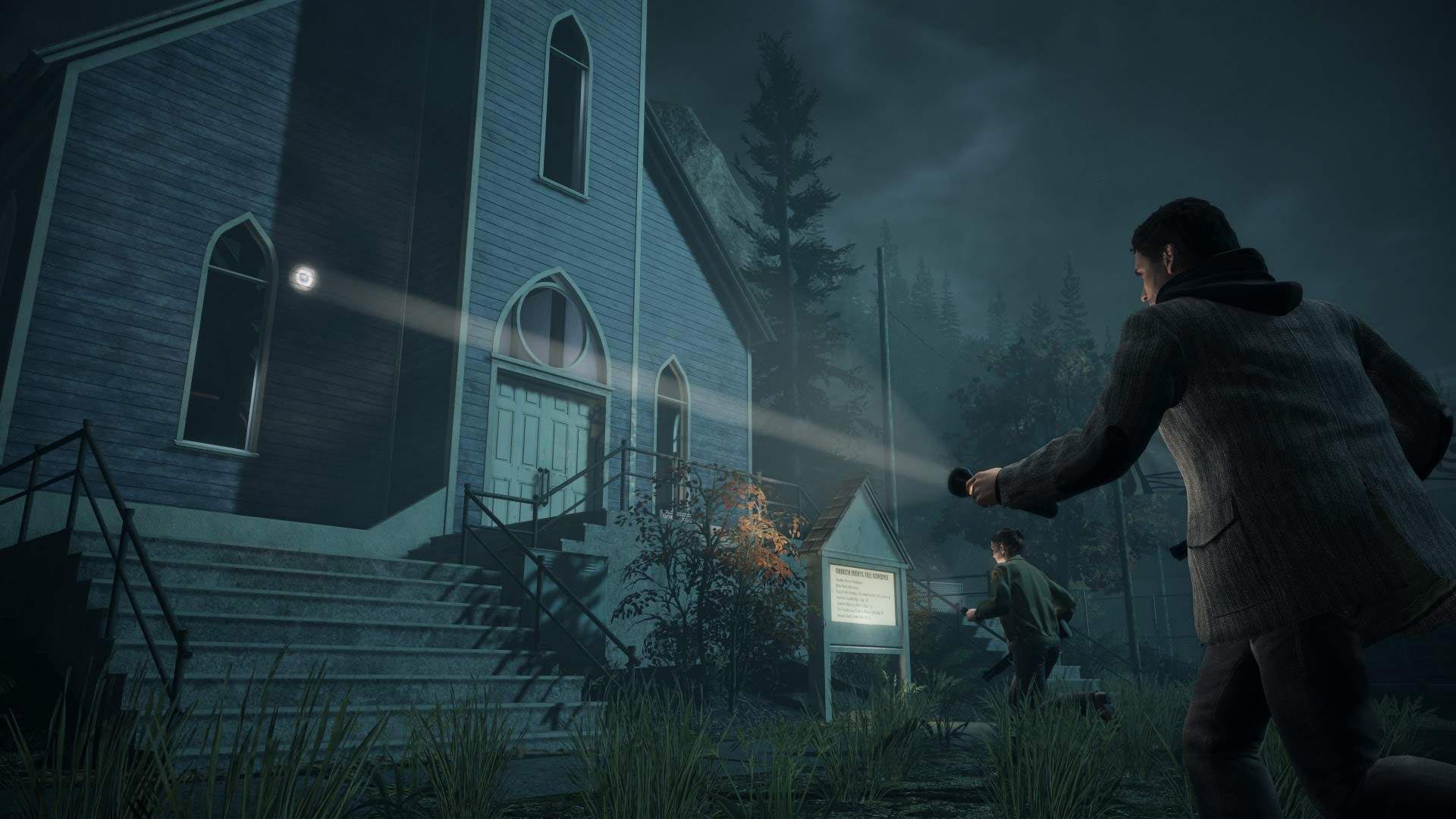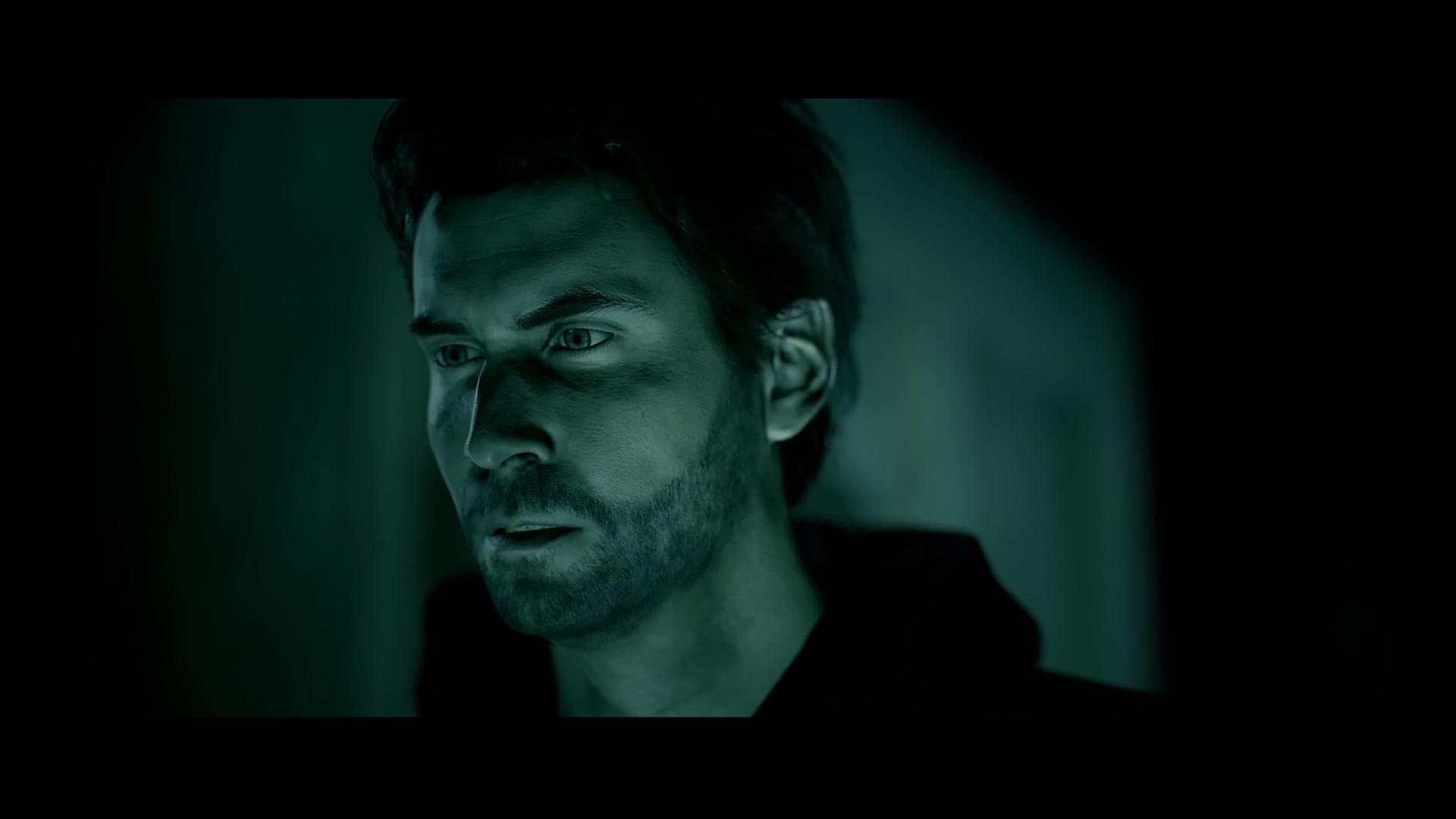Remedy talks bringing back a fan favourite with Alan Wake Remastered – MobileSyrup
Last year, Remedy Entertainment generated a lot of buzz when it revealed the AWE expansion to its acclaimed action-adventure game Control.
The add-on featured a crossover with Alan Wake, the Finnish studio’s fan-favourite 2010 Xbox 360 game, thus connecting them through an official ‘Remedy Shared Universe.’
Fast forward a year and Remedy is offering fans and newcomers alike the chance to jump into the definitive version of Alan Wake. Enter Alan Wake Remastered, which includes the original Alan Wake experience, its two story expansions, and a slew of technical enhancements like support for 4K/60fps.
Fundamentally, though, Remedy says it wants to offer the same experience, which focused on a thriller novelist who goes looking for his missing wife and must confront dark forces he supposedly created. As Remedy itself has described Alan Wake, it’s a mix between “the body of an action game and the mind of a psychological thriller.”
According to Thomas Puha, Remedy’s communications director, an Alan Wake remaster has been a long time coming. “We had talked about making a remaster for a while, but once Remedy got the publishing rights back from Microsoft in 2019, that really made it possible to start working on the remaster,” he says over email.
Once the rights were reverted to Remedy, Puha says the developer looked at “various partners” to help on the remaster before settling on d3t, an English studio that’s worked on the likes of The Witcher 3: Wild Hunt and Mafia II: Definitive Edition.
“D3t’s technical expertise and understanding of what we required made a very good impression on our team, thus we started working together,” he says.
While there are many remasters that are handled by studios other than the ones that created the original game, Alan Wake Remastered is in one of the more unique situations of having the original developer actively involved.
“The really nice thing about this remaster was that many of the key developers who created the game in the first place are still at Remedy. Several of them worked closely on the remaster to ensure we stayed as true to the original game as possible,” says Puha.
“When an external party starts digging into the codebase of a game they didn’t make, it’s extremely helpful to be able to talk to people who wrote the code in the first place. The same goes for the visuals which were very unique in Alan Wake, not only in terms of how it all looks, but how those visuals were created in the first place.”
“Not only is the hardware different, but also the tools and technology used to make games has evolved.”
Puha raises an important point. In the past, remasters of beloved games like Batman: Arkham Asylum and Silent Hill 2 have been criticized for brightening up environments and removing elements like fog to the detriment of the overall atmosphere. It’s easy to see how Alan Wake — being as David Lynch and Stephen King-inspired as it is — could theoretically fall victim to a similar fate while undergoing a visual overhaul.
It’s a risk that Remedy and d3t say they’ve been working closely together to avoid.
“Respecting the original vision was key. Art direction of the game holds up very well to this day, so the focus has been on making sure it all comes through in higher resolutions as well,” says Janne Pulkkinen, art director at Remedy. “A lot of the assets have been completely rebuilt with this in mind. Rendering has also been improved across the board, but with great care so we don’t lose what already worked so well.”
“A key factor in this remaster was preserving the original artistic intent. This meant looking at what Remedy wanted to do 10 years ago but couldn’t for technical reasons,” adds Andy Booth, studio technical director at d3t.
Remedy has spoken at length about how it had to create a whole new engine for Alan Wake, and Booth is quick to point out that expanding upon that original work has been difficult in its own ways.
“The sheer number of platforms and the challenges that brings for a bespoke engine should not be underestimated. The original game shipped on Xbox 360 and was released on PC a few years later. They both used a DX9 renderer, and most of the code was the same between PC and Xbox 360,” he says. “For the remaster, we’re targeting Xbox (Xbox One, Xbox One X, Xbox Series S, Xbox Series X), PlayStation (PS4, PS4 Pro, PS5) and PC. This has required some major refactoring of the game engine and lots of targeted optimization for specific platforms.”
That’s because, as he mentions, “a lot has changed” since the release of the original Alan Wake — two new generations of consoles, to be precise.
“Not only is the hardware different, but also the tools and technology used to make games has evolved. To make sure that our art team was able to use tools they were familiar with, we had to move the toolchain and pipeline to modern art creation packages,” he says. “It was a similar process for the code team, which meant moving to a modern compiler — one of the more interesting parts of this was moving from 32bit to 64bit, as this presented challenges throughout the code base. However, the trickiest area was porting the scripting system. The game uses a custom scripting language, and a bespoke virtual machine is processing these scripts, which required some quite extensive changes to be 64bit compatible.”
He says “a lot of engineering effort” has been made “to move large parts of the rendering code to run asynchronously” in Remastered. “From a technical point of view, we’ve tried to make targeted improvements without fundamentally changing how the renderer works. The remaster is using the original engine, but nearly all the rendering tech within it has either been tweaked or built upon.”

If that’s a bit jargon-heavy for you, Remedy and d3t have provided some practical examples of how the tech has been updated while remaining faithful to the original game.
A “good example” of this, Booth notes, is Alan Wake‘s volumetric lighting, a computer graphics technique used to add lighting effects like beams of light to a rendered scene. In the original game, volumetric lighting was used to create the ‘Safe Haven’ spotlights under which Wake can take refuge from his supernatural foes.
“Taking inspiration from this, we have added a completely new volumetric lighting system that works globally — you can see the moonlight streaming through the forests, and it really makes the scenes feel more dynamic and alive,” says Booth. “The volumetric lighting has been balanced to be complementary to the existing lighting, allowing us to maintain the original artistic intent.”
Updating the visuals also presented benefits when it came to the character models. As Pulkkinen notes, Wake’s appearance is based on the actor Ilkka Villi. With the “increased fidelity,” he says Remedy was provided with “an opportunity to match his likeness much more accurately than in the original.”

Further, Puha says the graphical improvements allow for greater parity between the game’s multiple “versions” of Wake. “The live-action Alan, for example, looked different from the in-game character model,” he says. “With the remaster, we can be far more consistent with the character.”
Ultimately, Puha says Remedy is just excited to get the chance to give Alan Wake greater exposure.
“Fans had a great reaction to AWE and now with the remaster, especially the PlayStation audience who have not had the opportunity to play Alan Wake before [who] can [now] play the game,” he says. “We are just excited to have the chance to get Alan Wake out to a wider audience.”
Alan Wake Remastered will release on October 5th on Xbox, PlayStation and PC.
Image credit: Epic Games/Remedy Entertainment
For all the latest Technology News Click Here
For the latest news and updates, follow us on Google News.
